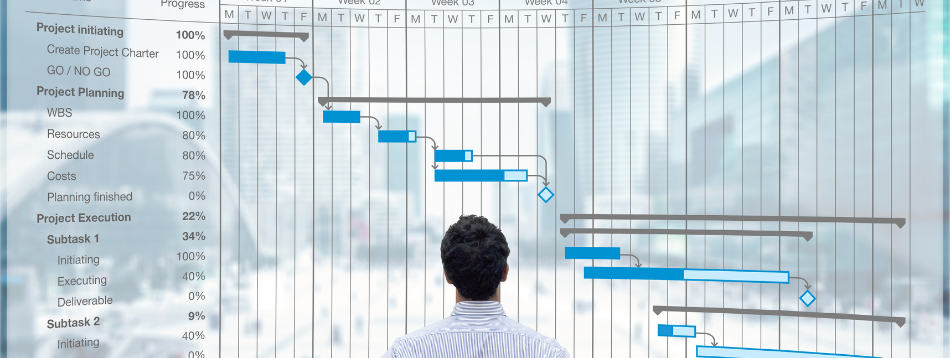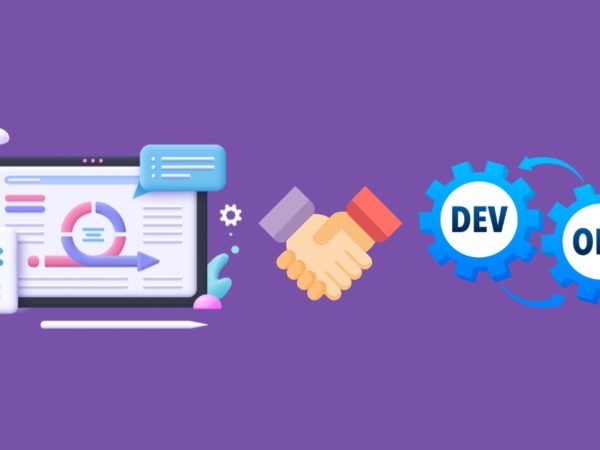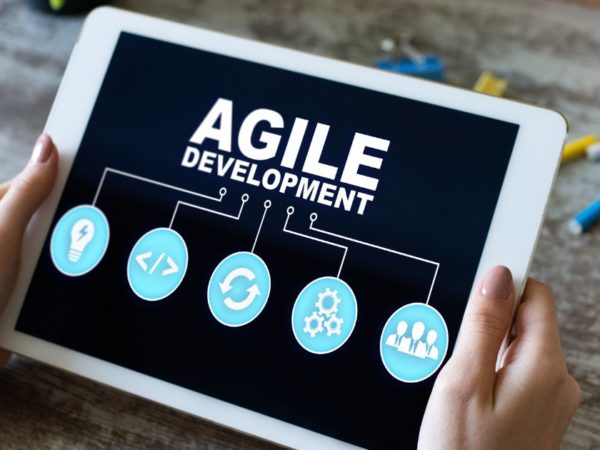Application Life Cycle (ALM) is the framework that assists in developing and delivering the software on schedule, within budget, and of top quality.
Importance of Delivering a Quality Product to the End User
We all use applications or software on computers or smartphones but have you ever wondered how those are designed, developed, and delivered?
Well, this section will look into a process called Application Lifecycle Management (ALM) which is a significant part of software development.
The ALM cycle is the core of any software or application development.
Let’s first understand why delivering software of excellent quality is essential.
It has become crucial for the software industry to build and provide top-notch quality software in the current competitive market. Suppose, for whatever reason, the software’s quality is unsatisfactory; then, there is the probability that customers are not likely to return, leading to negative evaluations in the connected web world.
The second factor is the expense and disruption caused by updating or replacing subpar software, which could hurt the company’s profitability. Low-quality software may generate users to give unfavorable reviews, leading to poor marketing, losing other customers, a long-term decline in sales and revenue, and occasionally expensive legal action.
The traditional software development method, which is fragmented, leads to inefficiencies, delivery delays, unforeseen changes, and increased expenses. These issues can be successfully resolved by implementing Application Lifecycle Management (ALM) framework.
ALM unifies various disciplines, processes, and teams under one entity to develop efficient software, easy management, lowers risk, and improve quality.
All sorts of companies always aim to deliver high-quality software to maintain their competitiveness in a global market and for customers to remain loyal. Software created and deployed according to industry standards guidelines improves the company’s reputation and offers the best user experience.
For the product to last and succeed, as well as to satisfy the consumer, high-quality software is crucial. Any program or product must be built with the consumer in focus and must consider their needs. Quality is of the utmost importance while developing software and solutions.
Delivering high-quality software to customers guarantees they are getting the most value for their money. Thus it will assist in building customer engagement and trust, which in turn encourages favorable evaluations in the marketplace and brings in more clients, sales, and profits.
What Is Application Lifecycle Management (ALM)?
<img alt="YouTube video" data-pin-nopin="true" data-src="https://kirelos.com/wp-content/uploads/2023/02/echo/maxresdefault.jpg63edc46656e32.jpg" height="720" nopin="nopin" src="data:image/svg xml,” width=”1280″>
The ALM process is the foundation for all successful software development and application delivery. Let’s see ALM’s precise definition and its important sections.
ALM, or Application Lifecycle Management, is a crucial step in the software development process that is required for the effective creation and upkeep of an application.
It can involve tasks like testing, problem patching, and performance optimization, as well as the management of the complete life cycle of a software product from inception to deployment.
The end-user experience is also included in this process, focusing on detecting and resolving problems that affect the user’s experience.
Teams may utilize ALM to guarantee that each application is thoroughly tested before going live and that any user issues are dealt with immediately. Additionally, ALM aids in developing applications that adhere to organizational standards and expectations.
DevOps and Agile are utilized with ALM because they further structure the software development process. So, ALM further comprises operational components like change control, user acceptability testing, and release management.
The process of ALM involves a coordinated set of practices, techniques, and tools used by enterprises to manage software development projects so that they are completed effectively, on schedule, and following quality standards.
ALM Has Three Primary Areas
#1. Governance
This section deals with the management of requirements and resources. It also encompasses the administration of data security, user access, change tracking, review, audit, deployment control, and rollback.
#2. Application Development
In this section, the prominent roles are fulfilled by developers to identify current problems and perform planning, designing, constructing, and testing of the application as well as ongoing enhancements.
#3. Maintenance
This covers updating optional and dependent technologies as well as deploying the app.
The software development lifecycle can be managed on a single platform with ALM, making the process much more efficient and increasing the possibility that the final product will be delivered successfully.
Importance of Application Lifecycle Management (ALM)
From conception to production, Application Lifecycle Management (ALM) provides a comprehensive view of the complete lifecycle of application development.
It allows developers to keep track of all the changes made at each stage of the development process to ensure it meets the standards set by managers and stakeholders.
SMBs to large businesses incorporate the ALM process into their systems to offer applications of the utmost quality while cutting costs and pointless delays.
Overall, the software created and delivered using the ALM framework increases the development process’s speed and efficiency and guarantees that everyone is working towards the same goal to satisfy the customers’ rising expectations.
Another essential task the ALM performs is assisting in the collaboration of various teams involved in software development, including teams of developers, designers, QA testers, and operational experts. This collaboration would help to reduce technical debt and risks associated with delivering software solutions to clients.
Adopting an ALM framework has several benefits, including improving decision-making, team engagement, speed and quality, accuracy, etc. It also gives a clear project vision and increases visibility across teams.
Due to ALM’s immediate access to any updates or changes that have been done, it assists developers in troubleshooting problems that happen during deployment. To create and deploy reliable applications while reducing costs, time, and expenses, ALM is crucial.
Stages of Application Lifecycle Management (ALM)
Application Lifecycle Management (ALM) is the term used to describe how a company creates and maintains its applications. ALM, in its broadest sense, comprises the complete management of the software development life cycle and consists of four stages.
Other steps, including design, testing, quality assurance, etc., are included in these core four stages.
Let’s quickly review the definitions of these four fundamental ALM stages:
- Planning
- Development
- Deployment
- Maintenance
Let’s quickly review the definitions of these four fundamental ALM stages:
#1. Planning
As it lays the foundation for the creation and implementation of the application, it is the most crucial stage of software development. It involves assembling requirements, examining the information, and developing a schedule and budget.
During this stage, a software development plan is implemented to ensure that all parties involved agree regarding the project’s aims, objectives, and schedule.
The planning phase is crucial because it guarantees the software will be delivered effectively. While concentrating on final goals and objectives also involves evaluating current procedures and applications.
Decisions about the technology stack, strategy, and other elements that might influence the implementation are made during this phase.
#2. Development
Code development is the focus of the development stage, which includes several tasks like designing, coding, verifying, and testing.
The software program performs several tests and implementations in this Application Lifecycle Management (ALM) process to ensure optimal operation. QA teams, testers, and developers frequently test the coding at this stage and address any problems.
The software is also enhanced at this phase by improvements and feature additions to the current software. Performance and security testing are also conducted to confirm that the program complies with all standards and requirements.
#3. Deployment
Applications, services, and procedures are transferred from development to the target audience in a way that satisfies project objectives during the deployment stage of Application Lifecycle Management (ALM).
It entails preparing the environment in which the apps will run live. To ensure the seamless operation of the apps and services, it also comprises testing and optimizing them.
Additionally, automated tests and quality assurance checks are also a part of the deployment operations to ensure that all application components are deployed correctly and that the entire application functions as expected.
After a successful deployment, the application should continue to function until a change is made in the future or it reaches the end of its useful life. All software is tested at this point, and any flaws or errors are found and fixed.
#4. Maintenance
The maintenance phase of the application life cycle management process is the last phase (ALM). This stage’s primary goal is ensuring the application is up and operating efficiently, with few to no problems and little downtime.
The application is controlled, managed, and monitored during this phase to avoid unanticipated outages.
During maintenance, software updates and bug fixes may be applied to improve the application’s performance. The maintenance stage also involves providing support for the application users and resolving any issues arising from the application’s operations.
After going through the phases above, it is obvious how significantly ALM contributes to providing visibility to the entire software development life cycle, including but not limited to steps taken, latency, if any, testing phases, execution, delivery, and more.
Methodologies Adopted by ALM
As we saw in the paragraphs above, ALM is nothing more than a methodology used to design and create software to address problems that would have been caused by using a traditional approach to software development.
In this part, we’ll review the two approaches that the ALM framework uses most frequently:
- Agile Methodologies
- Waterfall Methodologies
Agile strongly emphasizes iterative and incremental development methods, which are best suited for projects with high degrees of complexity or unpredictability. The waterfall best suits projects with clearly defined goals and procedures because it uses a linear approach to accomplish all ALM stages.
Agile encourages frequent software releases, necessitating customer involvement, and feedback, whereas the Waterfall model does not because the project’s objectives and specifications are known in advance.
Consequently, the Agile methodology emphasizes adaptability, quickness, and communication between development teams and end users. With a waterfall methodology, each stage of the development cycle is finished before moving on to the next.
Both approaches have strengths and weaknesses, and picking the right one depends on the project’s nature and stakeholders’ preferences.
ALM vs. SDLC
ALM and SDLC (Software Development Life Cycle) is often confused with one another because they both deal with the software development process.
The main difference is that SDLC is a more conventional approach focusing on specific software development steps and procedures. In contrast, ALM is a comprehensive process that oversees the entire software development lifecycle from planning to completion.
ALM focuses significantly on communication between all stakeholders engaged in the development process to create sturdy and comprehensive solutions. In contrast, SDLC is a linear method that calls for a set of processes to be carried out in a particular order.
SDLC is a more constrained view of the development process, and ALM is a more comprehensive approach that considers every aspect of application development.
Benefits of Application Lifecycle Management (ALM)
For businesses trying to get the most out of their application investments, ALM is crucial. For optimal effectiveness, ALM assists organizations in designing and implementing applications in a simplified and effective manner.
In this section, we will take a look at various benefits of adopting Application lifecycle management (ALM) for software development:
- Improved collaboration between teams
- Better decision making
- Enhanced visibility
- Bug tracking is simpler
- Better resource utilization
- Reduces cost of development
- Shorten the time to market new apps
- Increase productivity
- Better project tracking
- Reduces errors
- Drives greater efficiency and flexibility throughout the range of applications
Application lifecycle management (ALM) is essential for producing high-quality solutions on time and within the allocated budget.
Learning Resources
#1. Beginning Application Lifecycle Management
This book is suggested if you want to learn the ALM step-by-step from beginning to conclusion. Author Joachim Rossberg defines and emphasizes the significance of ALM.
The book explains how to assess your current situation and use the findings to plan a future course for developing your ALM process.
The book covers practically all of the key ALM ideas, including strategy, frameworks, assessments, automation, planning, collaboration, metrics and traceability, visibility, etc.
#2. Agile Application Lifecycle Management: Using DevOps to Drive Process Improvement
This book provides a comprehensive guide on how to apply DevOps ideas to improve software development processes. It explains how DevOps may help align business and customer needs with the software development process, resulting in a higher-quality end product and quick delivery.
Additionally, it provides valuable advice on deploying DevOps in a business, including best practices and strategies for overcoming common challenges. The book also covers DevOps components, including continuous deployment, speedier feedback loops, and improved customer experience.
#3. Application Lifecycle Management Standard Requirements
The book Application Lifecycle management states the process and to manage the entire application development lifecycle. It contains details about an application’s creation, testing, rollout, and ongoing maintenance.
The organization elements required for project management, resource management, and risk management are described in depth in the book. It also advises businesses on the best ways to apply ALM and the vital procedures and tools required.
Final Words
Organizations looking to create and deliver top-quality software within budget prefer to adopt the framework, process, and strategies. Application Life cycle management (ALM) is a proven methodology widely adopted across industries to plan, design, create, and deliver applications.
The above post intends to provide insights into ALM’s framework and functioning and will clear the clouds about ALM working.
Next, check out what technical debt is and why you should care.



